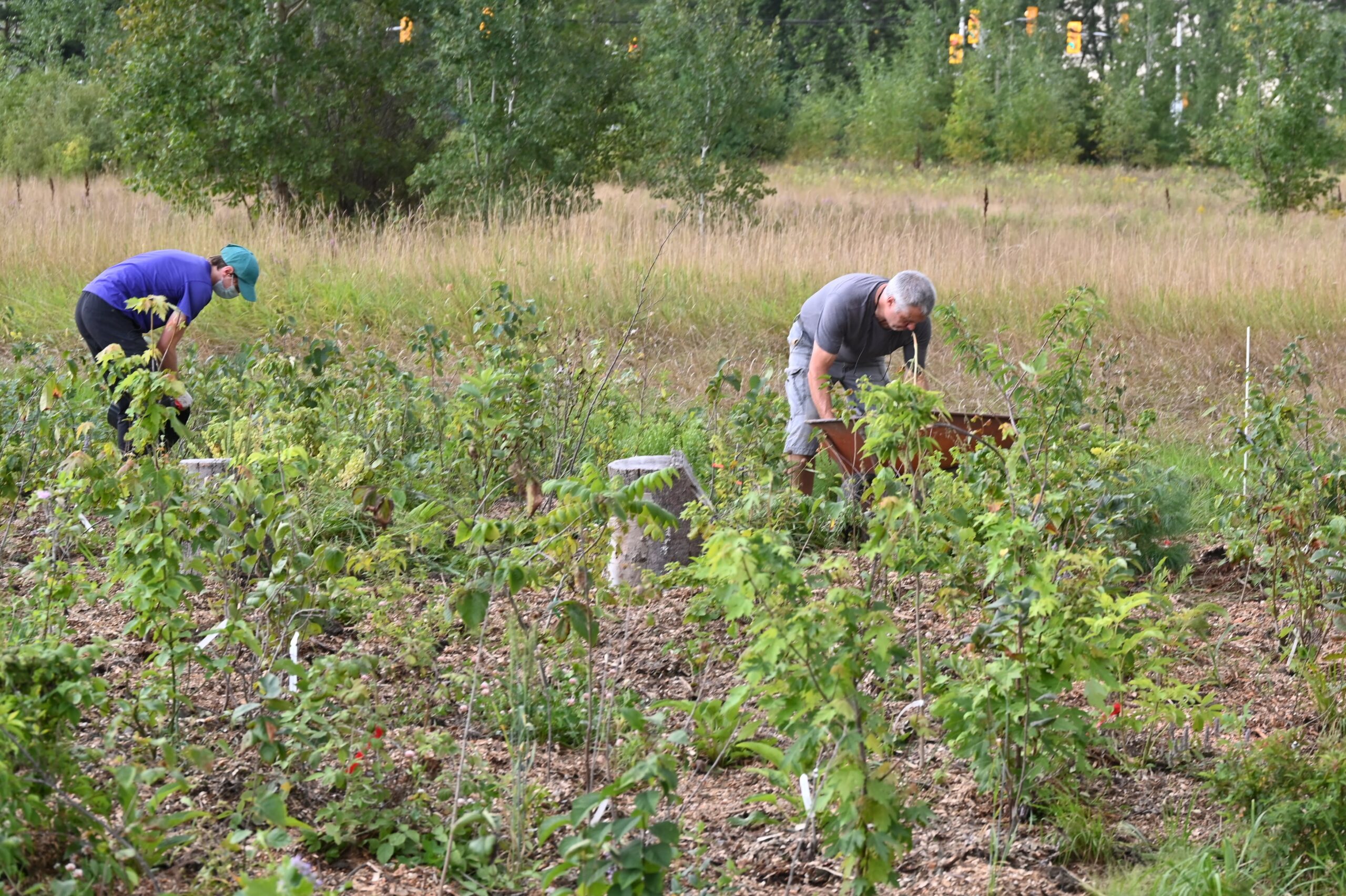FCF is driven to become a leader in Tiny Forests
Forêt Capitale Forest is driven to become a leader in the Miyawaki Method Tiny Forest movement in the National Capital Region. Since May 2022, FCF has planted nine Tiny Forests following the Miyawaki Method of afforestation. Five of the nine Tiny Forests planted are located at our publicly-accessible Base of Operations in Blackburn Hamlet.
The Miyawaki Method is a forest planting method created by Japanese botanist Akira Miyawaki that aims to help restore native ecosystems by accelerating the natural vegetation succession process. The method is characterized by amending the soil with natural and organic materials to replicate the soil composition of a mature forest, planting a wide range of native or naturalized species, and planting multiple canopy layers of mature forest (i.e., overstory, understory, forest floor).
Tiny Forests can be employed as an efficient and effective way to increase access and exposure to green spaces, especially in smaller urban spaces.


What’s been planted?

All nine Tiny Forests planted by FCF applied the key characteristics of the Miyawaki Method of afforestation. This is important to note as Tiny Forests that do not apply all the key characteristics, including the soil amendments, may be less effective at accelerating the natural vegetation succession process. Following all the key characteristics will allow the forest to replicate a 100-year forest in 20-30 years.
What’s found in our Tiny Forests?
- Tiny Forest Demonstration Plot 1
- Date Planted: May-June 2022
- Number of Species Planted: 49
- Number of Plants:
- Total =441
- Trees = 157
- Shrubs = 168
- Forbes = 108
- Forest Size: 130 square metres
- Access: Public
- Project Partners: Forêt Capitale Forest
- Project Funders: Forêt Capitale Forest, Nanabush Food Forests, Tree Canada, Reactine Canada